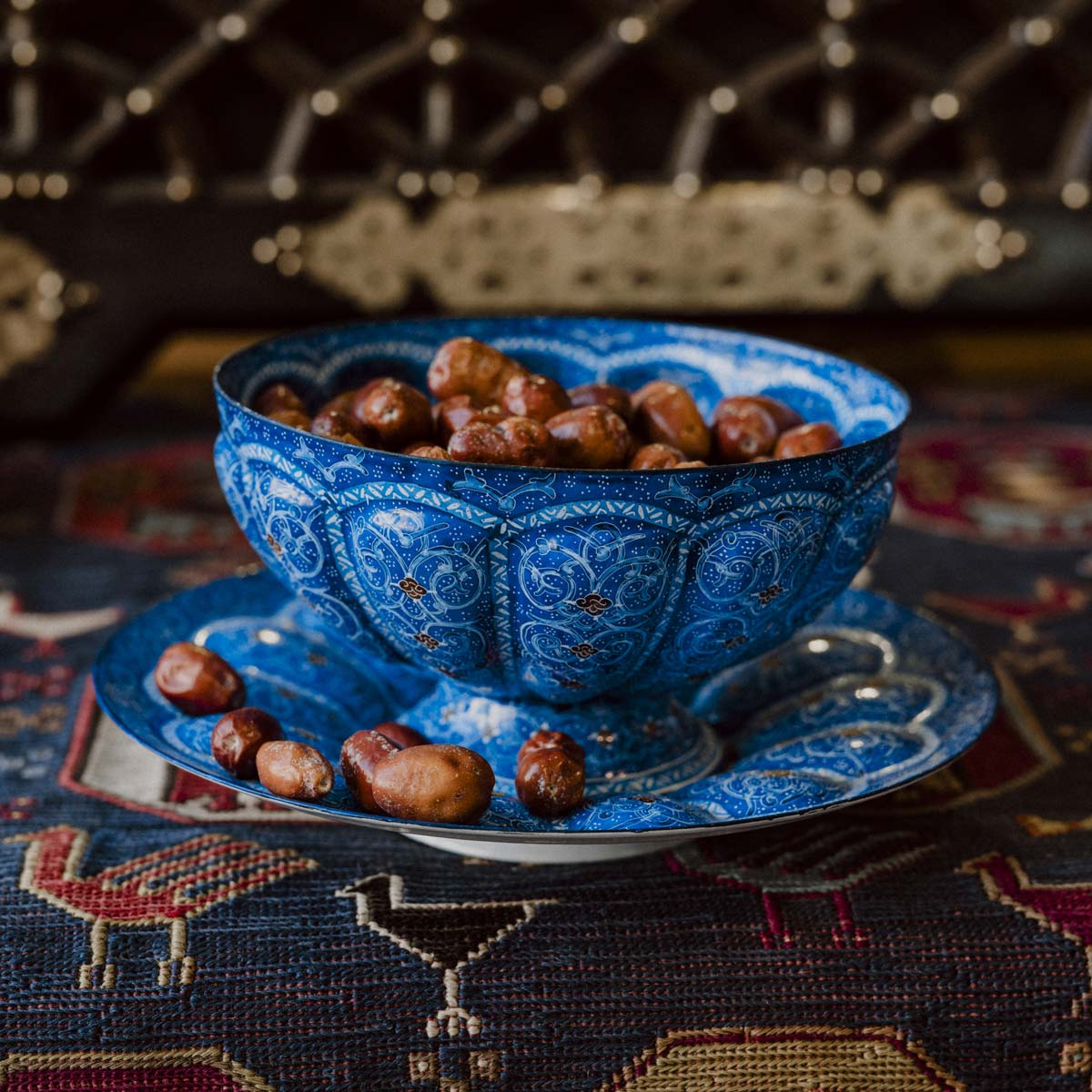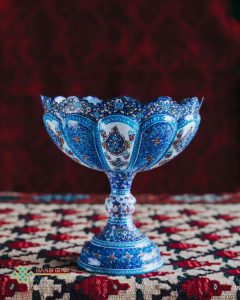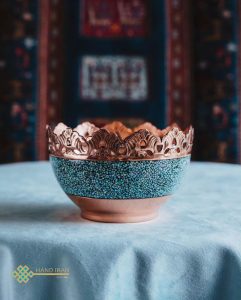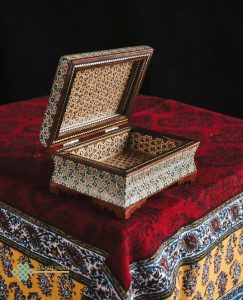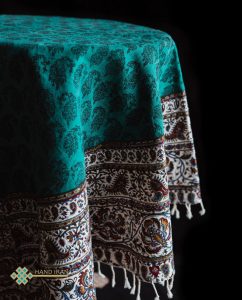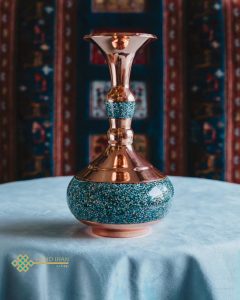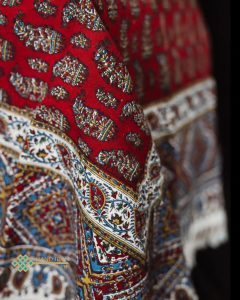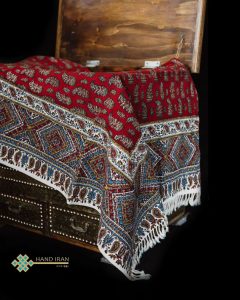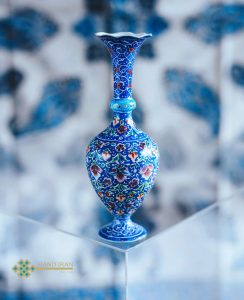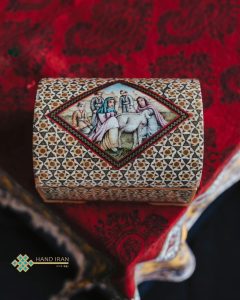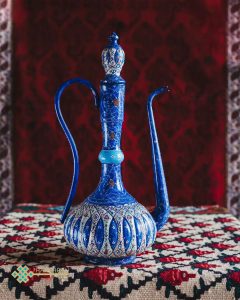Minakari, also known as enamelling, is an ancient craft with a history of 5,000 years. It is primarily practiced on copper but can also be applied to gold and silver. Gold, unlike other metals, does not oxidize when enamel melts, allowing for higher-quality designs. These intricate designs are created with attention to detail, resulting in stunning resemblances.
The process of enamel formation involves a combination of various salts and metal oxides subjected to high temperatures (750 to 850 °C). Colors develop gradually through the intense heat. Isfahan is currently the hub of enamel production, flourishing with the contributions of skilled artisans and artists.
Minakari has been employed to adorn a variety of dishes and ornaments, combining fire and earth with painting techniques to produce exquisite patterns.
Experts believe that this art form originated from adapting Byzantine enamels to Iranian works and subsequently flourished in other countries. Examples of enamelwork have been found in European antiquities dating back as far as the 13th century BC. Notable artifacts include gold rings discovered in Cyprus and the renowned statue of Zeus in Greece. Excavations in Nahavand uncovered gold earrings showcasing enamel glazing on metal, dating back to the 7th and 8th centuries BC. Another ancient artifact is an Achaemenid-era armband decorated with gold and enamel, currently housed in the Victoria and Albert Museum in London.
During the Seljuk period, minakari was prevalent in the production of brass and pottery, extending its influence to neighboring countries. An exemplary piece from this era is the Arsalan Alb tray, an enamel work on silver displayed at the Boston Museum of Fine Arts.
Various ancient Iranian pottery works can be found in museums such as the Armitage Museum in St. Petersburg, as well as museums in England and France. The Mongol period brought changes to metalworking and enameling in Iran.
Today, minakari is practiced in Isfahan, Shiraz, and Tehran, where a distinct style emerged, replacing Iranian court-inspired imagery and attire with Arabic motifs. The Timurid period marked the easternmost expansion of metal deposition. White enamel is not used in this art form; even if some pieces appear white, they have a different colored background. The designed object is then ready to be fired in the kiln at temperatures typically ranging from 400 to 500 °C, fixing the colors onto the surface.
Minakari extends beyond traditional objects and can be found in various items, including jewelry boxes. The captivating and soothing beauty of this vibrant art form unfolds as one delves deeper into its colorful world. Pottery art stands as one of Iran’s finest and most suitable gifts and souvenirs.
Enamel serves as a medium for miniature paintings on ceramics and metal, showcasing vivid colors, unique imagery, and distinctive shapes on each piece.

